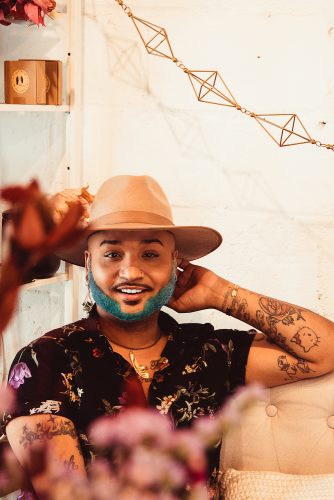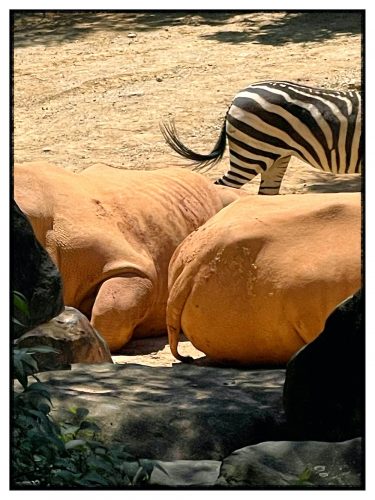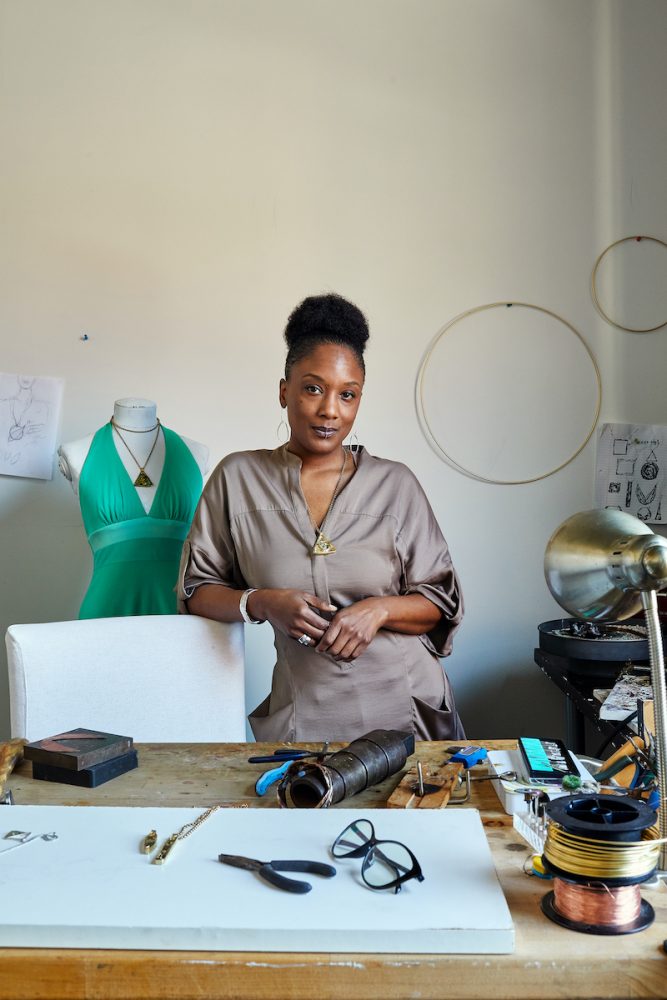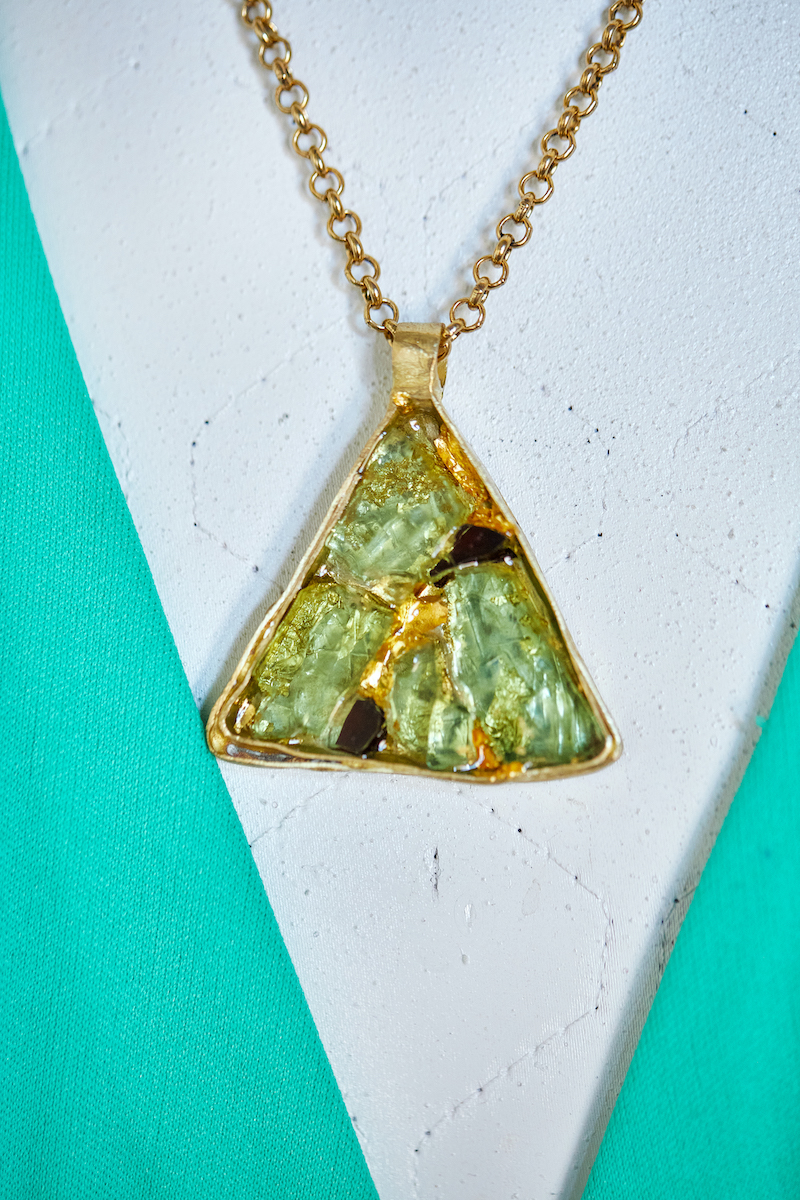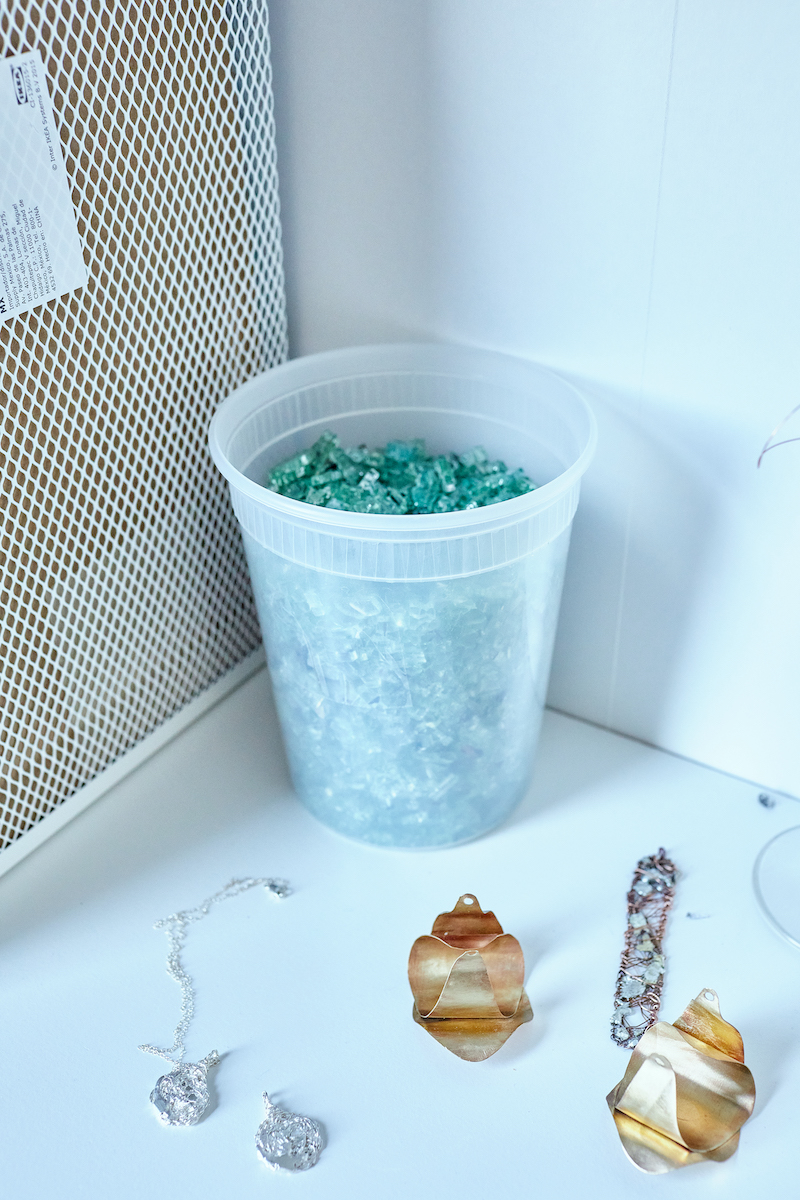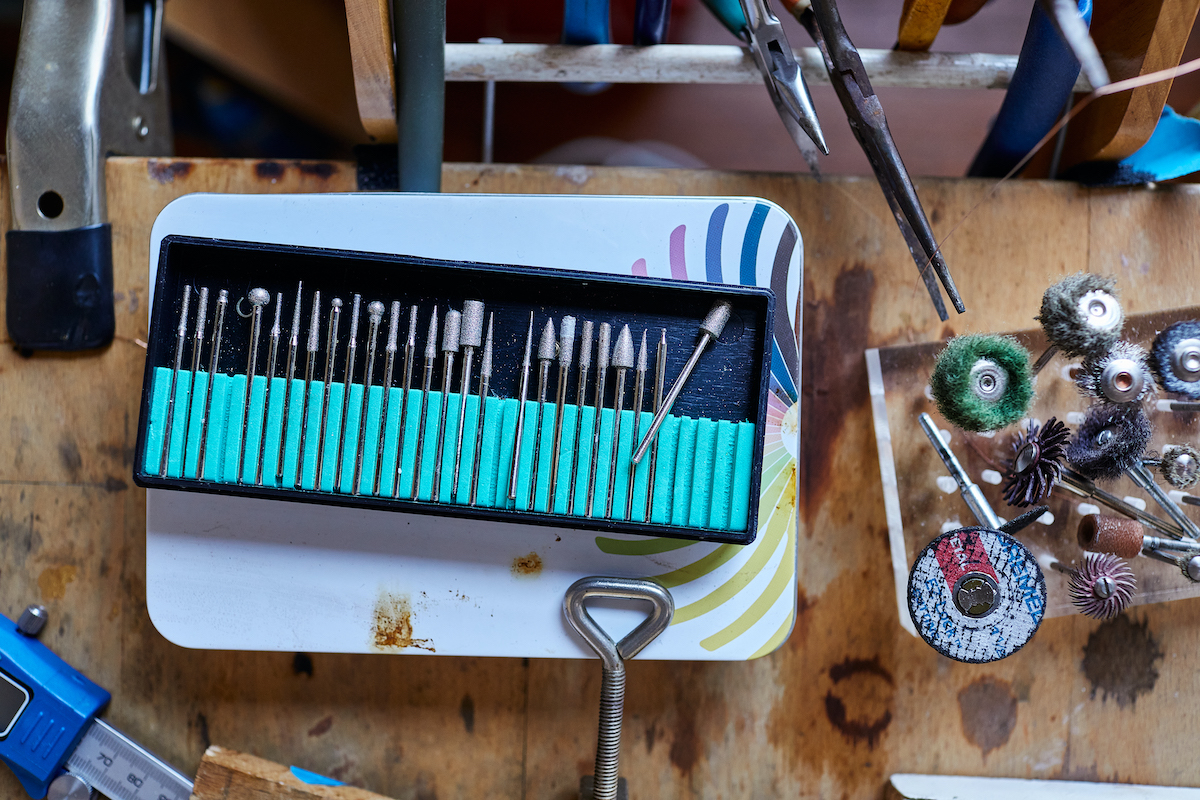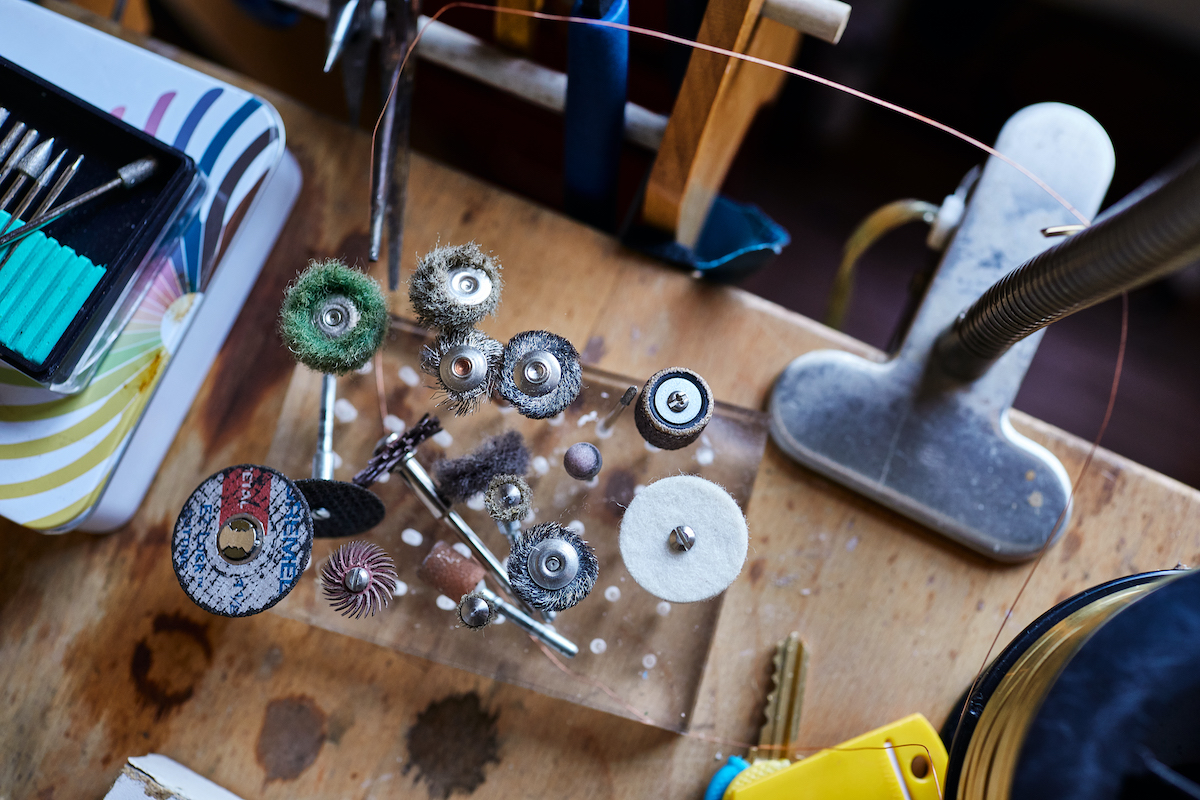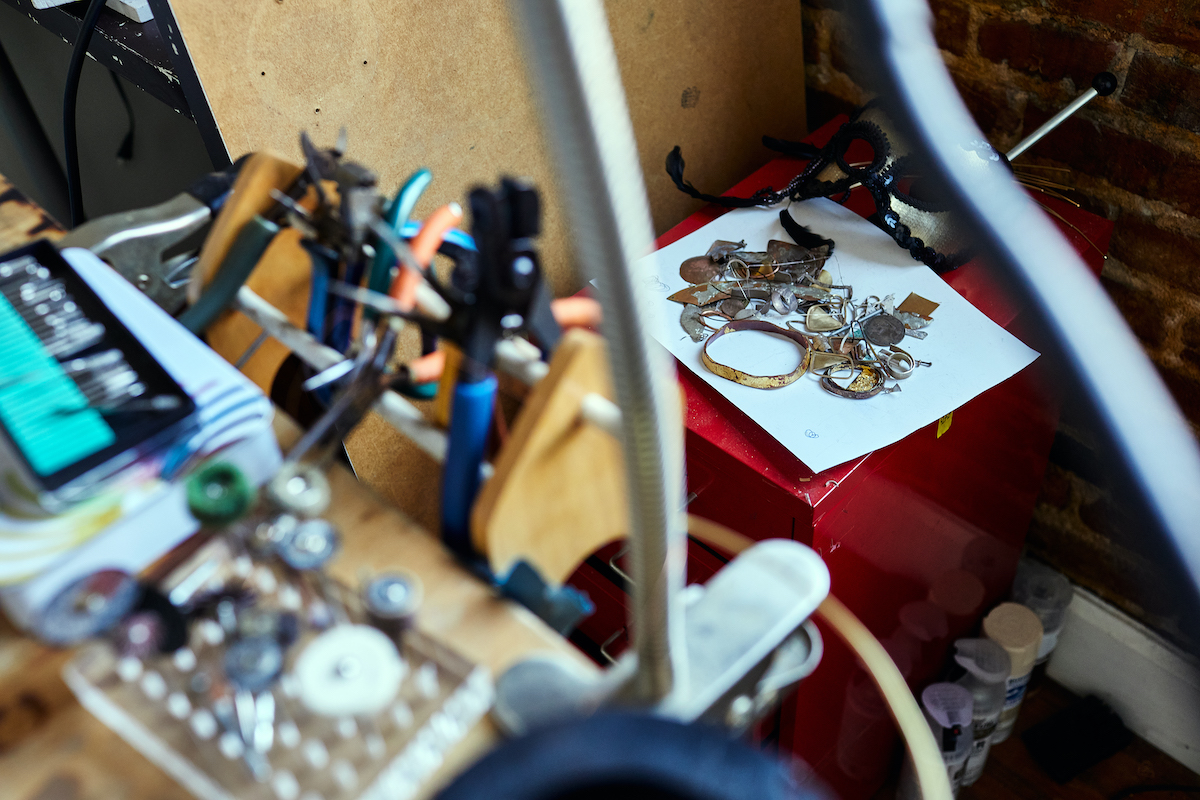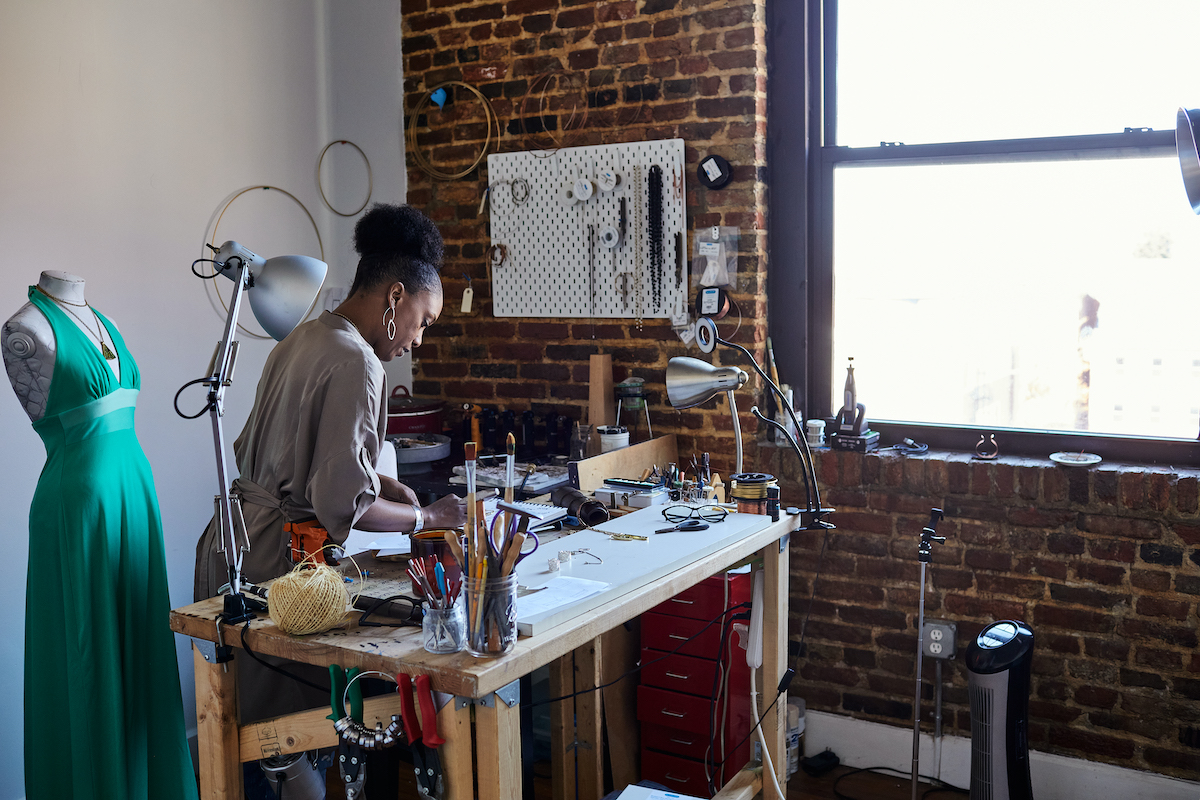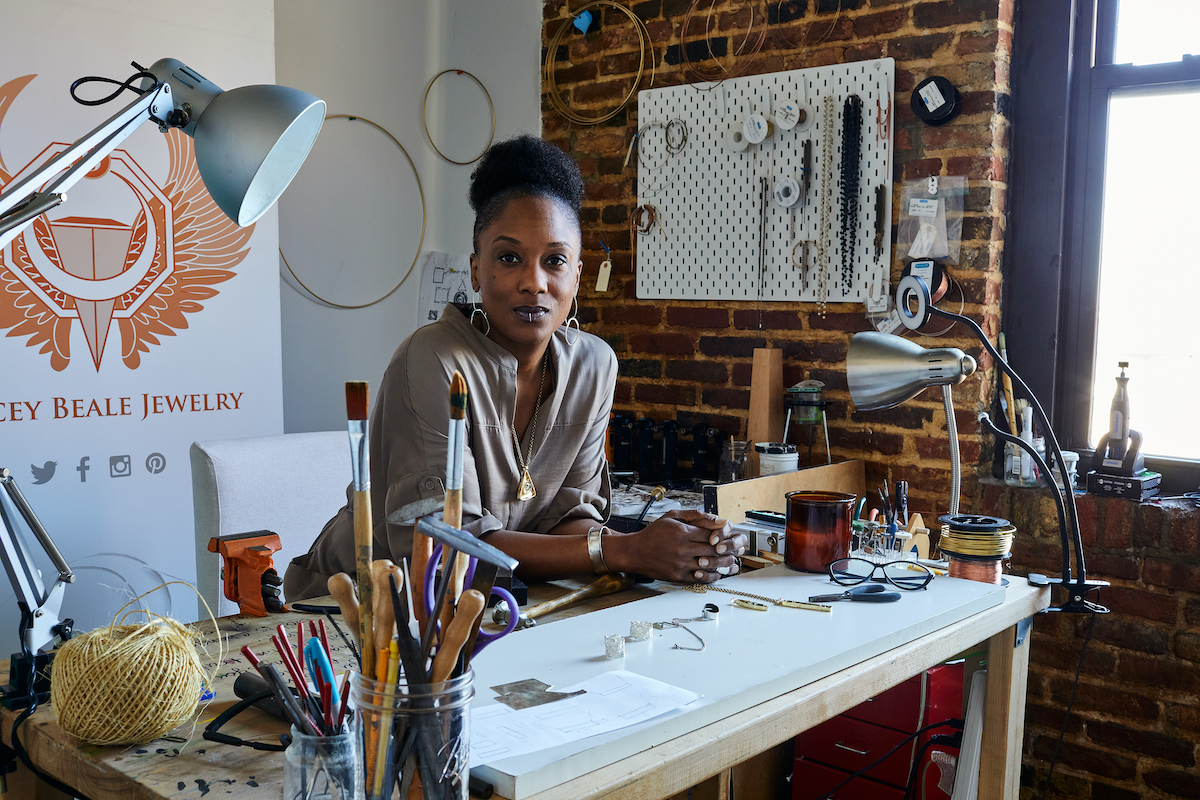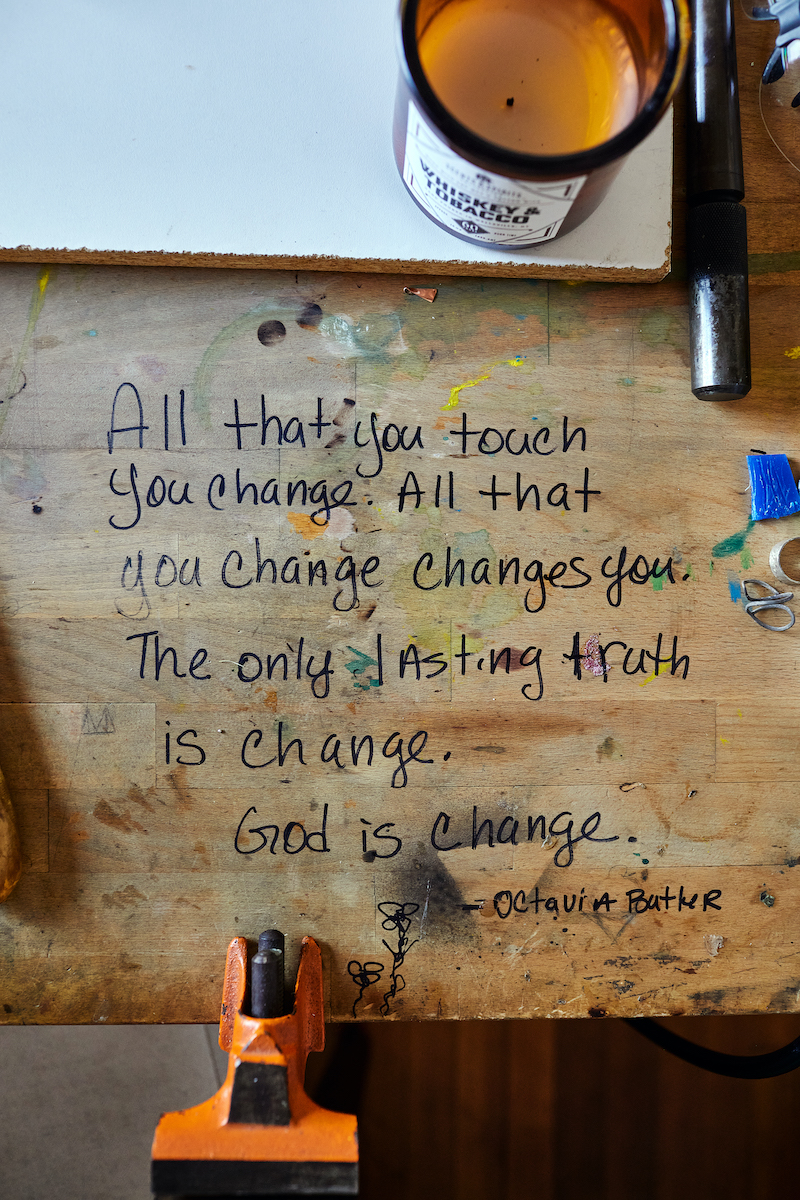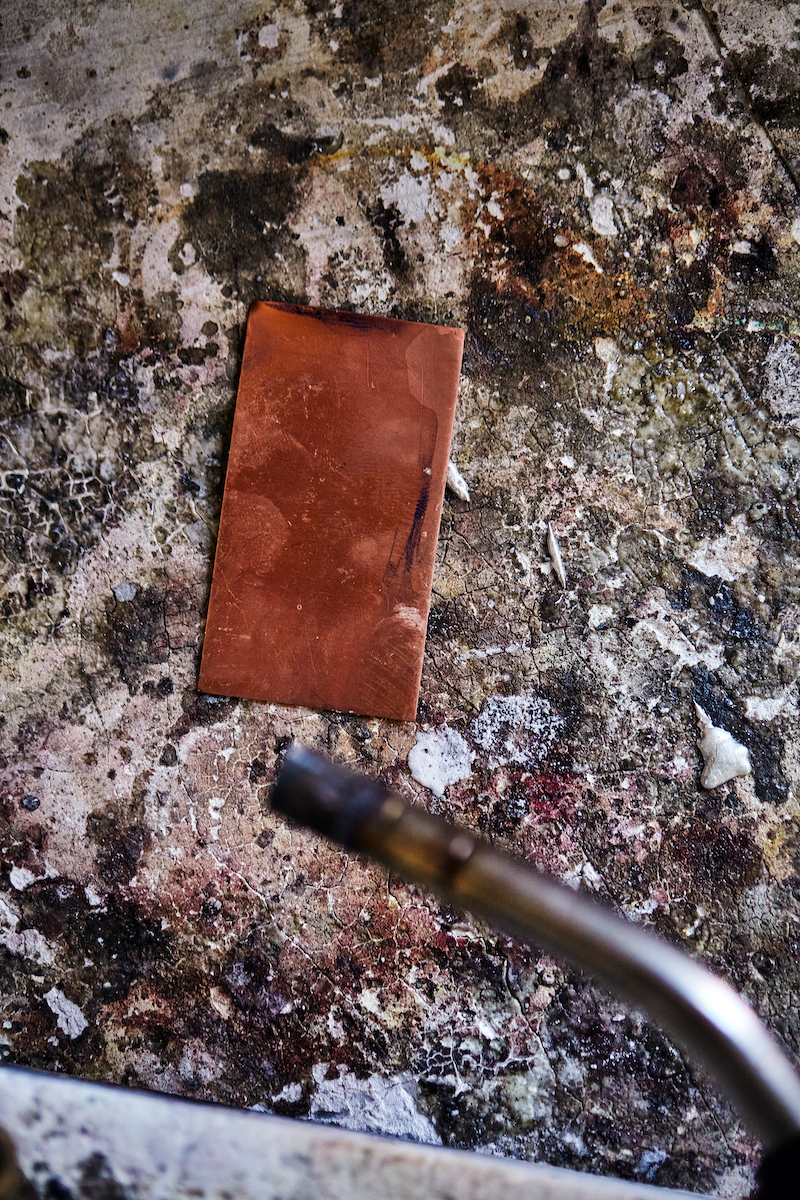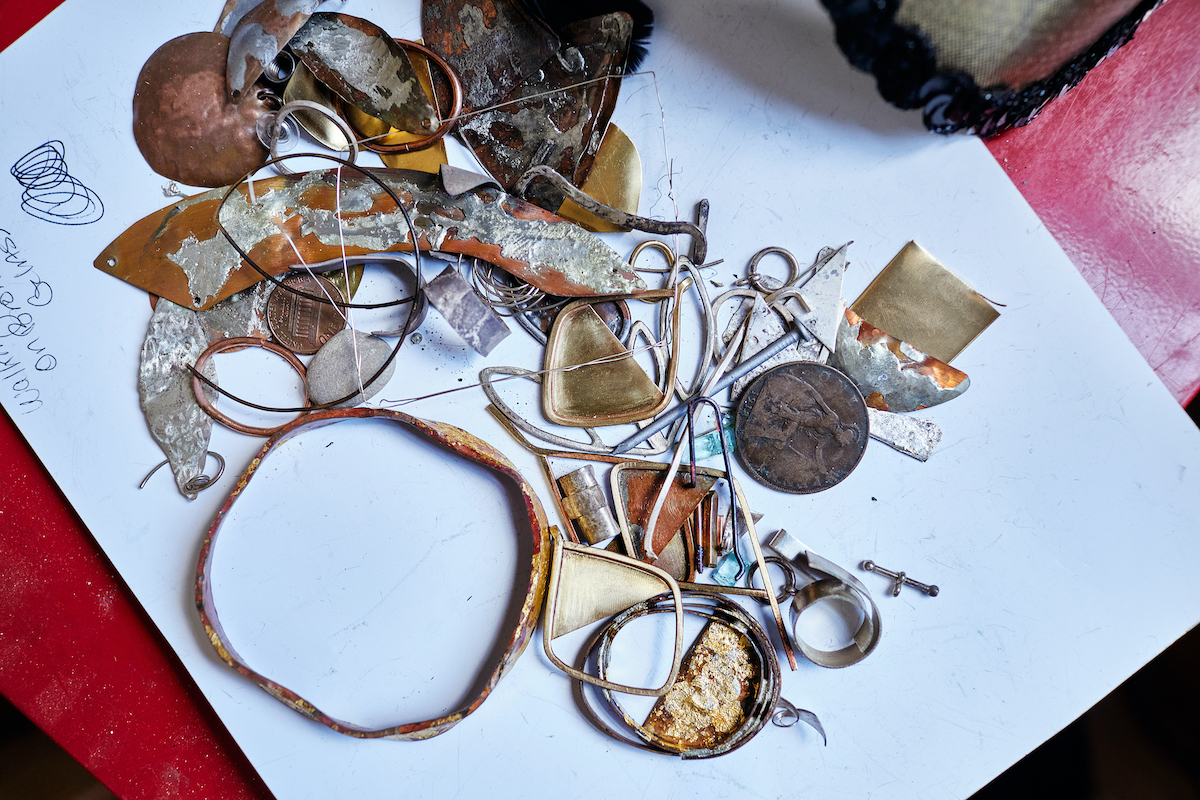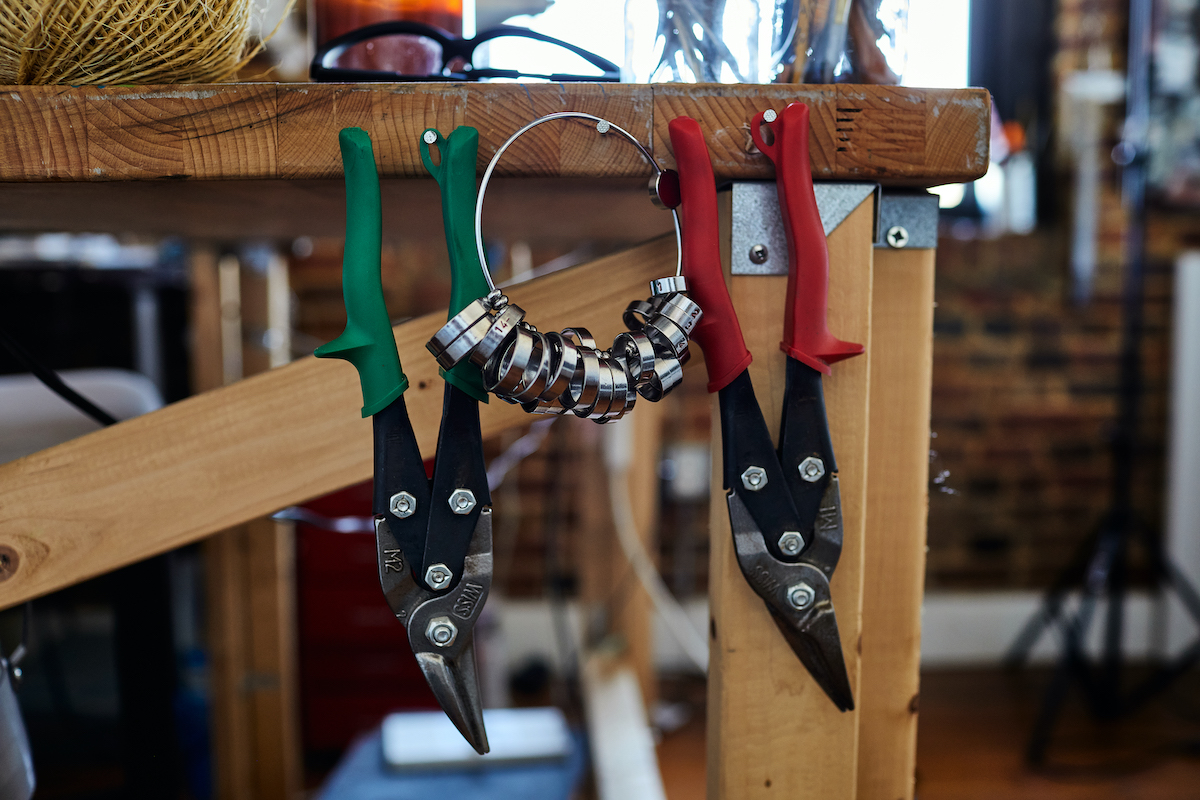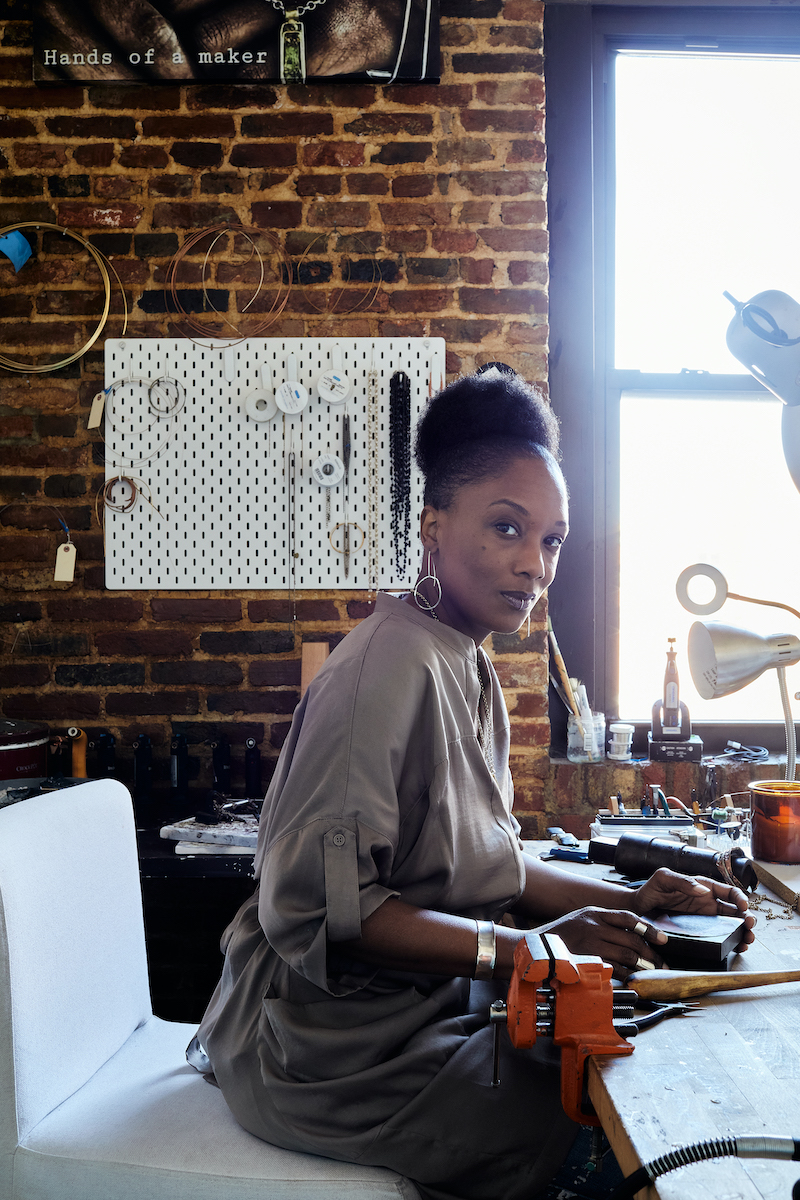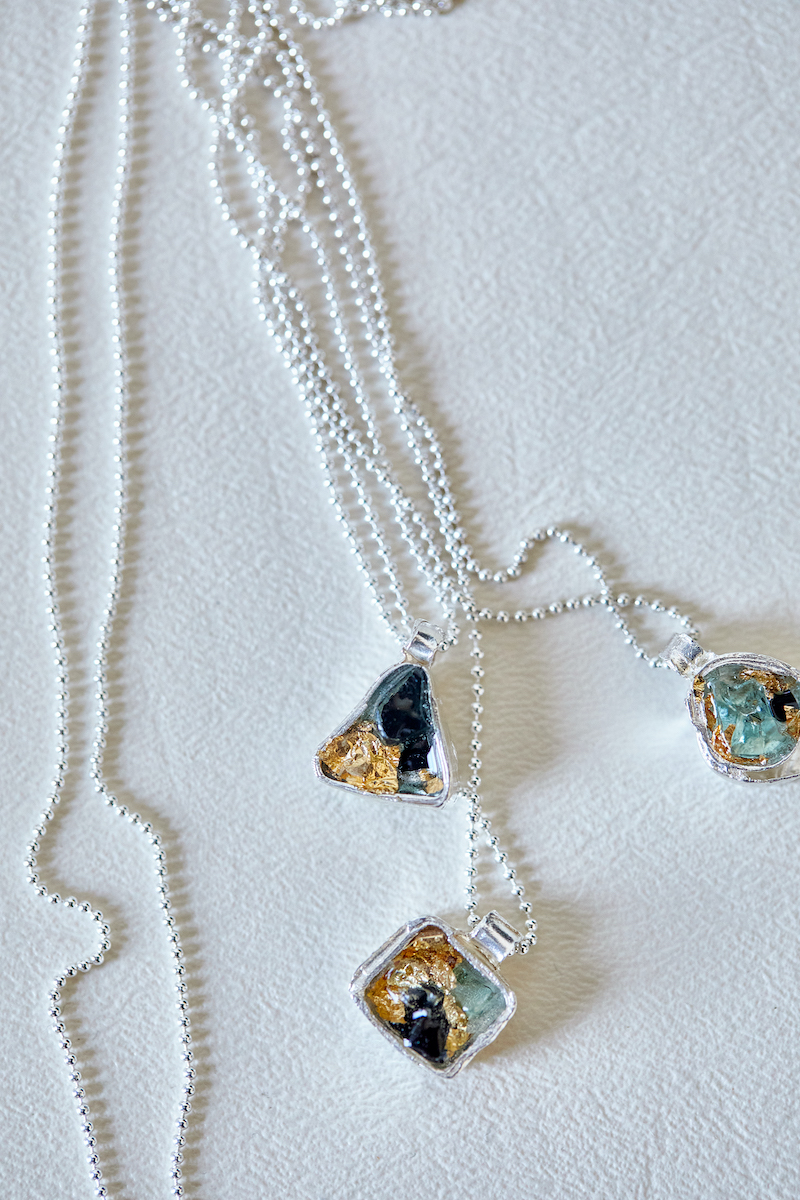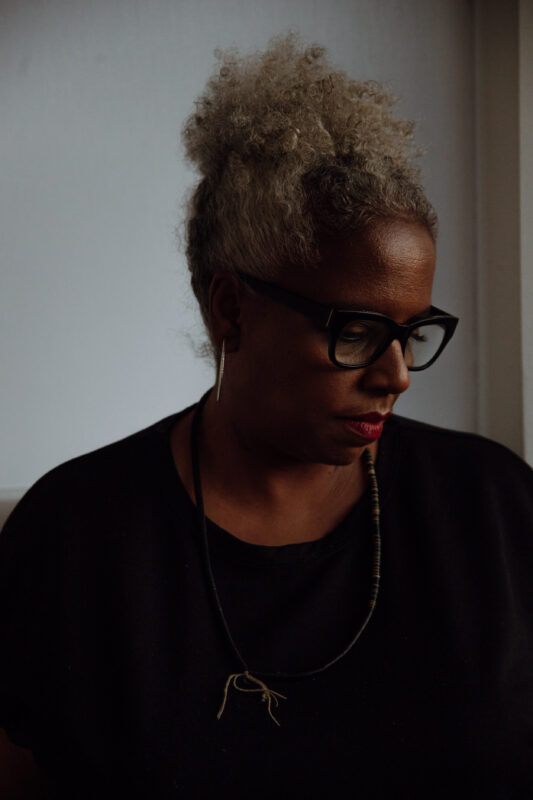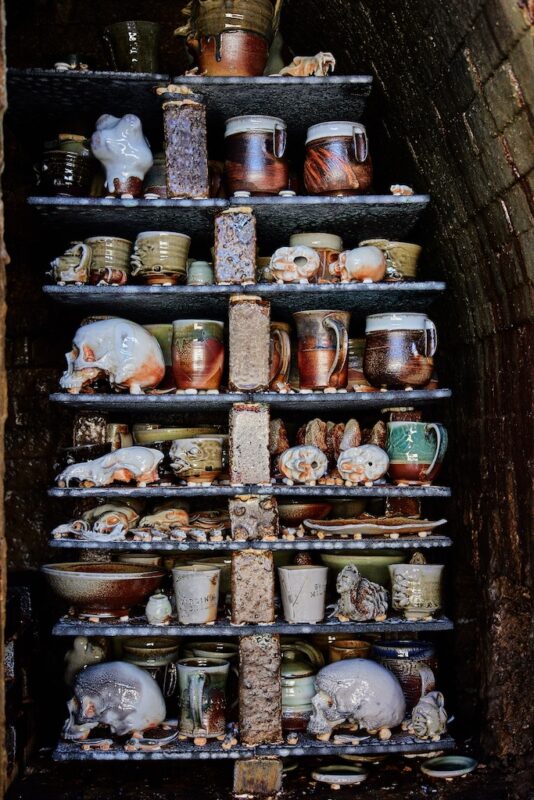Tracey Beale plays with fire. The jewelry artist, vocalist, and program manager for the Baltimore Museum of Art is constantly thinking about metal—its malleability and changeability when heated are attractive to her, but so is its permanence. Beale understands the role that jewelry plays in families and hopes her work will be worn by one person and passed on to others over time as an heirloom. “What is jewelry without the body?” she asks. “It becomes something completely different. People wearing the work is just as important as the work itself.” When tied to memories of the wearer, jewelry becomes a reminder of those who came before us, and Beale is constantly aware of working in close conjunction with legacy.
The theme of timelessness and the lineage that it evokes is at the forefront of my conversation over Zoom with Beale, who describes herself as spiritual and focuses her collections of jewelry on the broad and universal topic of “the cyclical nature of time.” Raised Christian, she also follows astrology, is interested in metaphysics, and believes in past lives and that her ancestors walk with her. This “mashup of belief systems,” as she calls it, informs her work which feels simultaneously contemporary and ancient, drawing influence from Egyptian tomb jewelry and ancient African jewelry. Beale, originally from Hartford County, Maryland, first learned about these histories of adornment as an undergraduate fine art major at MICA, but she remembers always being fascinated by jewelry. As a teenager, she saved up all her money from her first job working at McDonald’s to buy a sterling silver and quartz necklace that she put on layaway.
